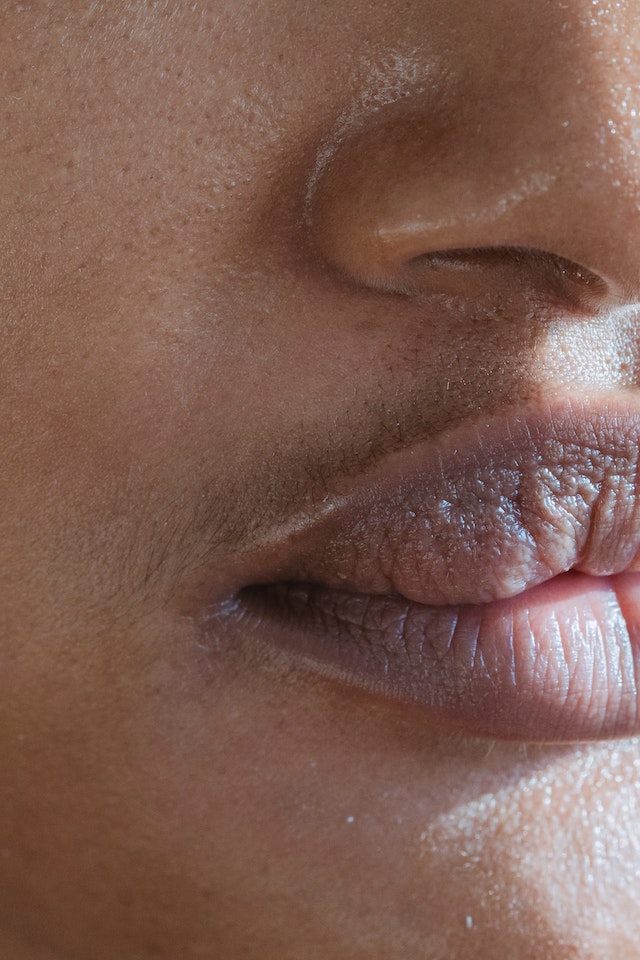Introduction:
Dealing with an oily nose can be irritating because it often results in a noticeable sheen and a generally oily look. By implementing proper methods and following a consistent skincare regimen, you can successfully control excess oil on your nose and attain a shine-free appearance. This article will delve into the factors that contribute to excess oil production on the nose. We will also give you tested techniques for reducing oily skin.
Exploring the Reasons Behind Excess Oil Production on the Nose
Excessive oil production on the nose can be influenced by a combination of genetics, hormonal factors, and environmental triggers. Individuals who have naturally oily skin are more susceptible to having an oily nose since their sebaceous glands generate a higher amount of sebum. Changes in hormone levels, like during the teenage years or menstrual cycles, can also lead to an increase in the body’s production of oil. Moreover, high levels of humidity and heat can activate the sebaceous glands, resulting in excess oil production on the nose.

Skincare Routine to Control Excess Oil on the Nose
Step 1: Cleansing
Start by washing your face with a gentle cleanser specifically formulated for oily skin. Look for products containing salicylic acid or benzoyl peroxide, as these ingredients help to control oil production.
Gently massage the cleanser onto your nose and rinse thoroughly with lukewarm water. Pat your face dry with a clean towel.
Step 2: Exfoliation
Exfoliate your nose once or twice a week to remove dead skin cells and unclog pores. Choose an exfoliating scrub that is suitable for oily skin, avoiding those with harsh granules that may irritate the skin.
-Apply the scrub onto damp skin and gently massage it in circular motions on your nose for about one minute. Rinse off thoroughly with lukewarm water.
Step 3: Toning
Use an alcohol-free toner specifically designed for oily skin. Toners help to balance pH levels and remove any remaining impurities.
Pour some toner onto a cotton pad and swipe it across your nose, focusing on areas prone to oiliness. Allow it to dry naturally before proceeding to the next step.
Step 4: Moisturizing
Contrary to popular belief, even oily skin needs hydration! Opt for lightweight, oil-free moisturizers that won’t clog pores but still provide adequate moisture.
Apply a small amount of moisturizer onto your fingers and gently pat it onto your nose until fully absorbed.
Step 5: Sun Protection
Protecting your skin from harmful UV rays is crucial in any skincare routine. Choose an oil-free sunscreen with at least SPF 30 specifically formulated for facial use. Apply an ample amount of sunscreen evenly all over your face, including the nose area. Reapply every two hours if you’re spending extended periods outdoors.
Additional Tips:
1. Avoid touching your nose frequently, as it can transfer oil and bacteria from your hands to your skin.
2. Use oil-absorbing sheets throughout the day to remove excess oil from your nose without stripping away moisture.
3. Consider incorporating a clay or charcoal mask into your routine once or twice a week, as these can help absorb excess oil and unclog pores.
4. If you wear makeup, opt for oil-free and non-comedogenic products specifically formulated for oily skin types.
Remember, consistency is key when managing oily skin. Stick to a regular skincare routine tailored for oily noses and give it time to show results.
A regular skincare regimen is crucial for effectively controlling excess oil on the nose. Here are some suggestions to include in your daily routine:
Tips for reducing shine on the nose with makeup:
1. Start with a clean and moisturized face to create a smooth base.
2. Apply a primer specifically designed for oily skin to control excess oil production.
3. Use a matte foundation or powder that matches your skin tone, focusing on the T-zone (forehead, nose, and chin).
4. Avoid heavy or creamy foundations as they can contribute to shine.
5. Lightly dust translucent powder over the areas prone to shine, especially the nose.
6. Opt for oil-free or matte finish products such as blushes and bronzers.
7. Blotting papers are great for absorbing excess oil throughout the day without disturbing your makeup. Gently press them on your nose when needed.
8. Choose lightweight and oil-free setting sprays specifically formulated to control shine while keeping your makeup in place.
9. Avoid touching or rubbing your nose throughout the day, as it can transfer oils onto your face and make it look shinier.
Conclusion:
You can control excess oil and achieve a matte complexion by implementing effective techniques and following a proper skincare routine. By comprehending the reasons behind excess oil on the nose and utilizing helpful suggestions such as implementing a suitable skincare regimen, employing effective makeup techniques, and adopting healthy lifestyle habits. Say farewell to that oily complexion. Celebrate your skin’s inherent beauty and revel in a harmonious, matte appearance.




